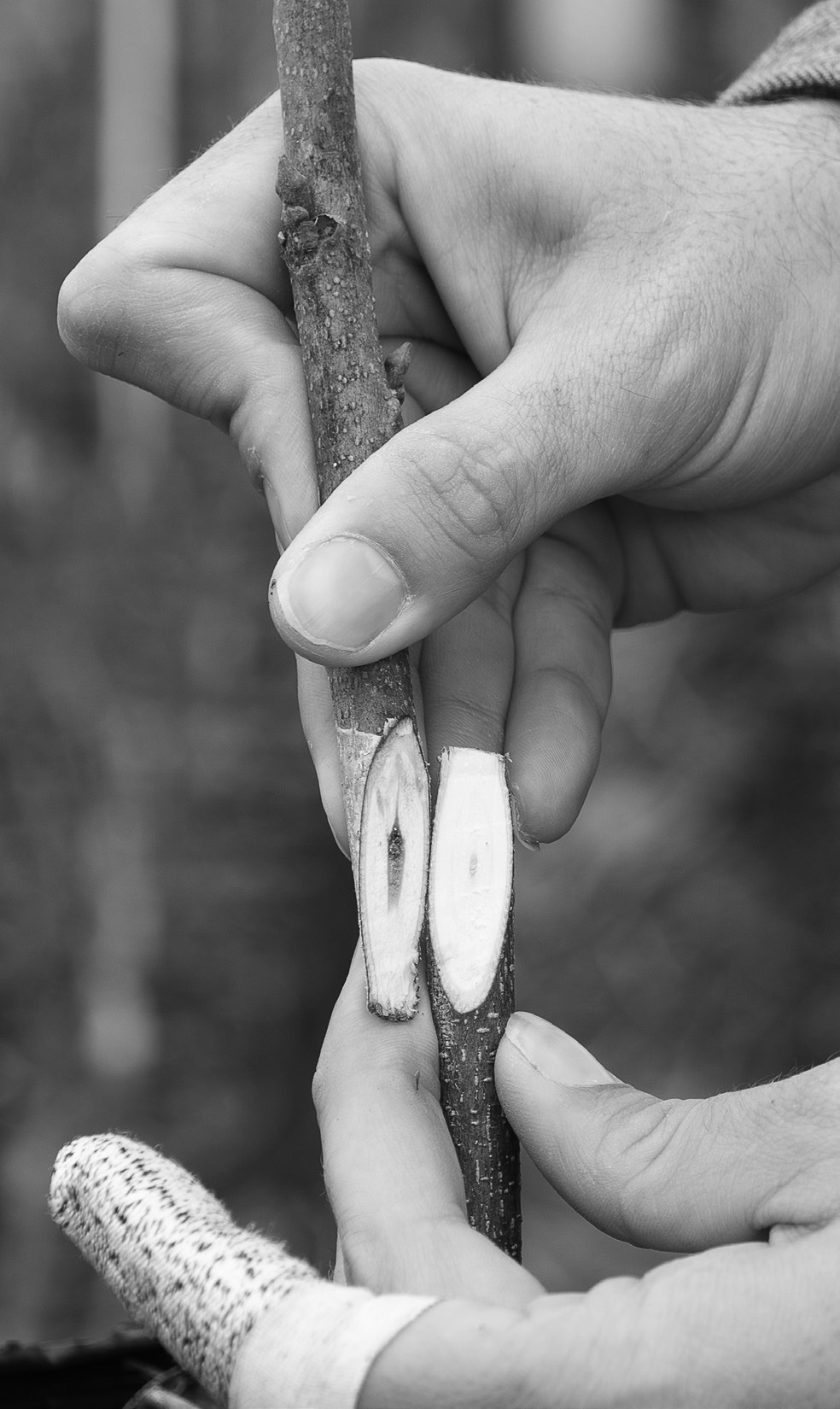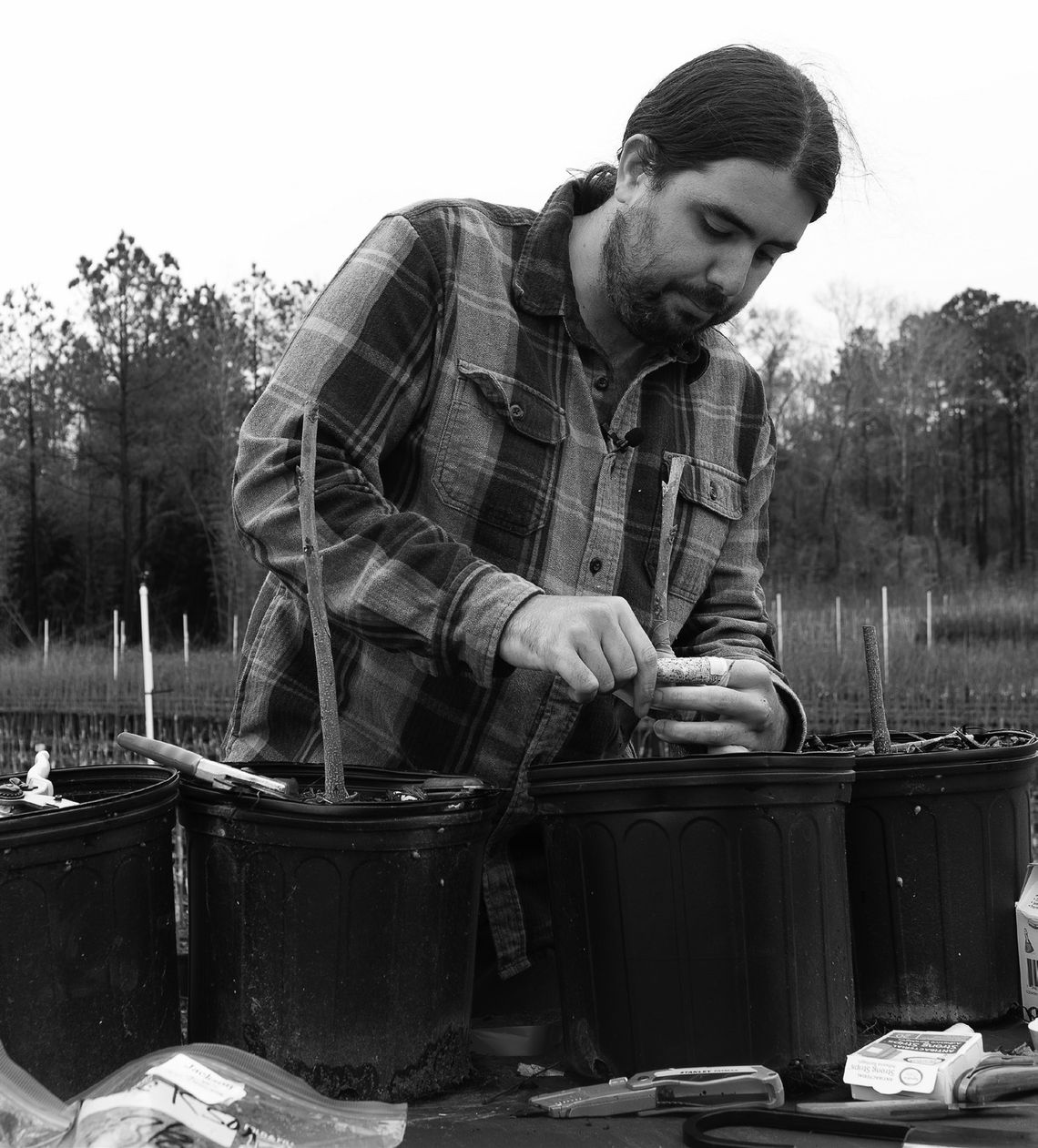Get it growing
If you’ve recently purchased a fruit or nut tree — or if you already have one in your home landscape — take a close look at the trunk near the soil surface. You might see a faint scar where two slightly different shades or textures of bark meet.
That scar is an artifact of a process called grafting, or fusing two separate pieces of wood into a new tree. From citrus to peaches, almost all fruit trees are grafted, and so are pecans. Some ornamental trees and plants, including Japanese magnolias, Japanese maples and camellias, also are grafted.
Grafting is somewhat of an art, and because it is a laborious procedure, it isn’t something most home gardeners do. It’s typically done at nurseries to propagate in-demand cultivars for sale and by hobbyists who enjoy the process or want to grow trees to share with others.
So why are trees grafted? There are a couple of reasons, according to LSU AgCenter fruit and nut specialist Michael Polozola.
“Let’s use pecans as an example,” he said. “If you plant pecans by seed, they don’t come true to type, and you can’t root them as a cutting — they just sit there and die.”
To reliably propagate the large numbers of trees needed to fulfill orders, nurseries depend on grafting — and they’re busy doing so right now. The cool, overcast conditions of late winter and early spring in Louisiana help freshly grafted trees heal and get ready to grow.
Trees are grafted when they are young — about a year or two old, depending on the species. The idea is to take a cutting from a tree with desirable characteristics and attach it to the base of another tree that will provide a root system.
The cuttings being propagated are called scion wood, and the tree being grafted onto is known as rootstock. A variety of techniques can be used to cut and splice together the two sections of wood, which enables the cambium — a green layer beneath the bark that generates new growth — of each piece to connect and become one. “We harvest the scion wood while the trees are dormant so that they’ll have time to heal,” Polozola explained. “You don’t want it to grow right away. You want that good connection.”
To be successful, it’s critical to collect scion wood from healthy trees. The rootstock also must be in good shape.
“You want it to have that energy that it pushes for that healing process,” he said.
If you’re interested in trying your hand at grafting — or just curious about how it’s done — here are some basic steps for the whip and tongue method, which is just one of several ways to graft. Polozola likes using this strategy to graft pecans.
Cut off the top of the rootstock, leaving a stem that is several inches to a foot high. (While it may seem strange to remove so much of the tree’s growth, keep in mind that supporting all of that wood takes a lot of energy. That energy is needed to heal the graft union and fuel growth of the scion wood that will be affixed to the top.)
Locate a piece of scion wood with a diameter similar to that of the rootstock. This needs to be a close match; otherwise, the cambium layers won’t line up and be able to join.
Use a grafting knife or grafting shears to make a slanted cut (or whip) across the end of the scion wood. Then, cut the tip of the rootstock stem at the same angle. Hold the two pieces together to ensure they fit together.
To help secure the graft, use a grafting knife to cut a notch (or tongue) in each piece.
Place the scion wood on the rootstock. The tongues will allow them to hold together securely.
Wrap the graft union tightly with grafting tape and film, which provide extra stability and trap humidity. This encourages healing, which takes a few weeks.
Grafting tools are extremely sharp and can be dangerous. Getting grafting right takes skill and patience. Time and money must be invested in growing rootstock and scion wood trees, and not all grafts take.
For all of these reasons, most people are content to leave grafting to the professionals.
“That process of grafting takes extra time than rooting something from a cutting,” Polozola said. “That’s why your fruit trees and your other ornamentals that are grafted often cost more. There’s some loss at every step of the process.”
To learn more about grafting, visit www. LSUAgCenter. com/ grafting, where you can view videos and other resources.



